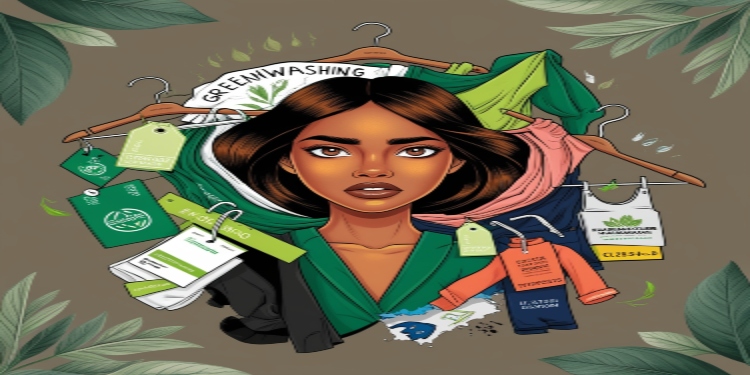As more consumers become aware of environmental issues, the demand for sustainable fashion has skyrocketed. Brands have responded with claims of eco-friendly practices, but how many of these claims are genuine? The term greenwashing refers to brands that market themselves as environmentally responsible while falling short in actual sustainable practices.
What is Greenwashing in Fashion?
Greenwashing occurs when companies market themselves as eco-friendly but, in reality, only engage in minimal or superficial practices to appear sustainable. For instance, a brand might introduce a “sustainable” clothing line made from partially recycled materials, but if the company continues other harmful practices, it isn’t truly committed to sustainability.
Why Do Brands Greenwash?
As sustainable fashion grows more popular, brands are incentivized to appeal to eco-conscious consumers. Instead of making genuine changes, however, they often choose the cheaper route of greenwashing. It gives them the appearance of being environmentally friendly without significantly altering their business practices or impacting their bottom line.
Common Greenwashing Tactics Used by Fashion Brands
Greenwashing in fashion takes many forms, from vague terminology to flashy marketing campaigns. Here are some of the most common ways brands mislead their customers:
Using Vague or Misleading Language
Terms like “eco-friendly,” “green,” and “sustainable” sound good but often lack specific definitions. Without standardized definitions, brands are free to use these terms without making real changes. Phrases like “natural,” “conscious,” or “responsible” may sound positive but can be used to mask unsustainable practices.
Highlighting a “Green” Collection
Some brands create limited collections labeled as sustainable, while their main operations remain harmful to the environment. While these collections may contain eco-friendly materials, they often make up a small fraction of the company’s overall output. This approach allows brands to look environmentally responsible without fully committing to sustainable practices.
Lack of Transparency in the Supply Chain
A truly sustainable brand should provide transparency about where their materials come from and how their products are made. Many brands, however, provide little to no information on their supply chain, making it impossible for consumers to verify their claims. In contrast, issues surrounding Adidas workers’ rights serve as a reminder that fair labor practices are essential to sustainability; worker welfare should be part of a brand’s commitment to an ethical and eco-friendly approach.
A recent survey found that 42% of consumers consider sustainability a key factor in their purchasing decisions, yet only 16% trust the sustainability claims made by fashion brands【source】.
The Real Environmental and Social Impact of Greenwashing
While greenwashing may seem like just a marketing tactic, its consequences are far-reaching and impactful. Beyond misleading consumers, greenwashing in fashion can worsen environmental issues and exploitation.
Environmental Impact of Superficial “Sustainable” Practices
When brands exaggerate their sustainability claims, they create a false sense of environmental progress. This illusion of positive change can slow down genuine sustainable innovation within the industry. Brands may adopt half-measures—such as reducing plastic in packaging—without addressing their larger environmental footprint, such as water pollution from dyeing processes or excessive energy use in production.
Social Impact: Neglecting Workers’ Rights
Greenwashing also extends to labor rights. Some brands promote an image of ethical fashion while overlooking fair wages and safe working conditions. For example, Adidas workers’ rights have come under scrutiny, as many workers face low wages and limited protections. Ethical practices aren’t just about environmental responsibility; they should include fair treatment of workers who produce the clothes we wear.
How to Spot Greenwashing in Fashion Brands
Identifying greenwashing can be challenging, but by learning what to look for, consumers can make more informed choices. Here are some strategies to help separate genuinely sustainable brands from those that are just riding the greenwave.
Look for Certifications
Certifications can provide a baseline for verifying a brand’s sustainability claims. Labels such as Fair Trade, Global Organic Textile Standard (GOTS), and Bluesign indicate a brand’s commitment to certain environmental and ethical standards. While certifications aren’t a guarantee of perfection, they are a good starting point for assessing a brand’s legitimacy.
Check for Transparency
Transparency is essential for sustainability. Look for brands that openly share details about their supply chain, including the source of their materials and their manufacturing practices. Transparent brands are more likely to uphold ethical and sustainable standards, as they have nothing to hide. If a brand is secretive about where their clothing is made, it could be a red flag.
Question the “Green” Products
If a brand offers a single “eco-friendly” collection, investigate whether it’s a genuine effort or a marketing ploy. A sustainable capsule collection can be a positive step, but it should be part of a larger shift towards environmentally responsible practices. A truly eco-conscious brand won’t limit sustainable practices to a small percentage of their offerings.
How to Support Truly Sustainable Fashion Brands
Consumers play a significant role in encouraging sustainable fashion by supporting brands that prioritize ethics and transparency. Here’s how to make informed decisions:
Buy Less, Choose Well
One of the most sustainable choices consumers can make is to buy fewer items of higher quality. Investing in well-made clothing reduces the need for frequent replacements and lessens demand for disposable fashion.
Support Ethical Brands
Research and support brands that prioritize environmental and social responsibility. Many smaller, independent brands are transparent about their practices and committed to ethical standards. While these products might be more expensive, they often last longer and are more ethically produced.
Embrace Second-Hand and Resale Options
Shopping second-hand is one of the easiest ways to reduce the demand for new clothing. Thrift stores, resale apps, and consignment shops offer plenty of options for finding quality items without contributing to the cycle of fast fashion.
Greenwashing in fashion is a prevalent issue that allows brands to profit from eco-conscious consumers without implementing meaningful change. By understanding the tactics of greenwashing and learning how to spot genuine sustainable practices, consumers can make more informed choices and support brands that prioritize both people and the planet. It’s crucial to remember that sustainability isn’t just about using recycled materials—it’s about creating a fashion industry that values transparency, ethics, and the well-being of its workers.













































































